Across the United States, winter is moving in. Many areas have already started to see their first snowfalls, with a lot of the season still to come, and the weather forecast doesn’t show much sign of a clear and quiet winter.
As fresh snow starts to pile on your roof, now is the perfect time to devise a plan to keep it from accumulating and becoming dangerously heavy as the winter drags on. Roof snow removal is critical in keeping your home and family safe over the winter. If you don’t regularly clear off excess snow, that additional weight can cause severe damage to your roof and the home beneath it.
In this guide, we’ll look at why it’s so important to remove excess snow from your roof, cover some of the best methods for rooftop snow removal and give you some dos and don’ts to keep you and your family safe, sound, and warm, all winter long!
How Excess Snow Can Hurt Your Roofing
Modern roofing is designed to accommodate plenty of extra weight, but there is a limit. As winter drags on and more and more snow piles up on top of your home, it’s essential to clear off some excess snow before its mass becomes too much for your roof to handle.
Each square foot of fresh, fluffy snow can weigh up to 3 pounds, while a square foot (or cubic foot, depending on how piled up the snow is) of heavy wet snow clocks in at a whopping 21 pounds! If enough of that is allowed to stack up on your roof over the winter, the snow load can cause structural damage, roof damage, and even roof collapse.
Additionally, there are other issues associated with excess snow besides its sheer weight. Compounded snow can cause ice dams to build up, leading to water damage inside your home, and it can block off your ventilation systems, which are essential for maintaining a warm, dry, and comfortable home.
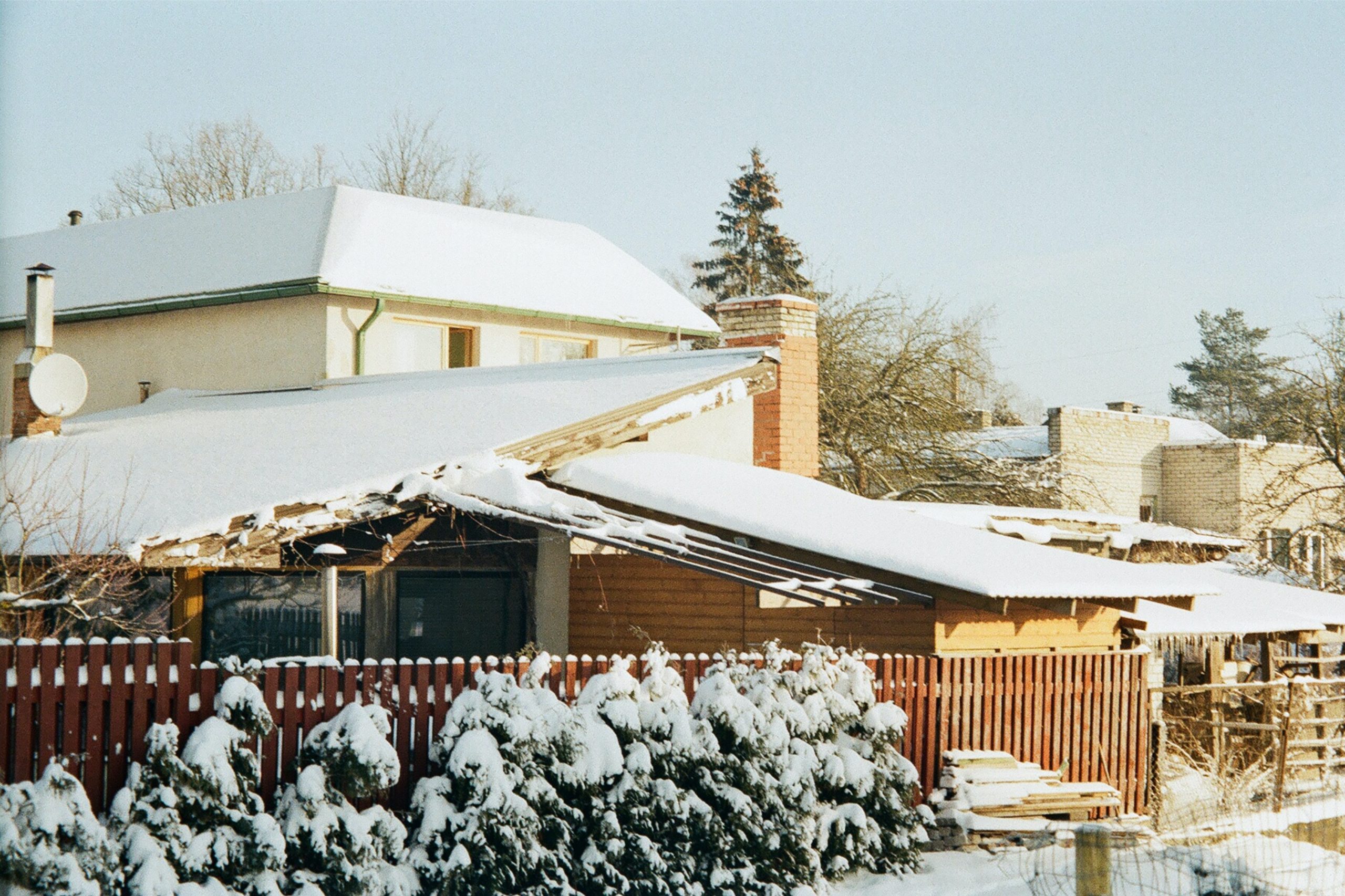
Formation of Ice Dams
Ice dams form when the snow closest to your roof melts from the heat radiating from your home. As the snow melts and turns to water, it runs down your roof, eventually reaching an area with temperatures that are once again below freezing. The water freezes and, as more water runs down and pools around it, eventually becomes a thick chunk of solid ice – an ice dam.
Ice dams add considerable extra weight to areas of your roof that weren’t necessarily designed for it. Over time, this extra weight can not only lead to structural damage but can also cause water to leak into your attic, leading to moisture damage, mold, wood rot, and other issues.
Too Much Weight on the Roof
Modern roofing materials can typically endure about 20 pounds per square foot of weight before they start to become stressed. This number can vary depending on the style, age, and materials of your particular roof.
For example, an older roof that has its foundations worn, dried out, and potentially damaged from years of strain, might only be able to endure a fraction of the amount of excess weight a newly built roof could. Similarly, pitched roofs can typically accommodate more snowfall since they distribute the additional weight, while flat roofs face the greatest risk of structural problems or collapse because heavy snow can pile on all winter long.
Even the toughest roofs have a limit, though. Sooner or later, too much excess snow can and will lead to roofing damage, structural concerns, and even a total roof collapse.
Blocking and Damaging Vents
In the winter, proper ventilation is essential to the health and safety of your home and its occupants. Proper air circulation keeps the air from your heating systems clean and healthy, removing potentially harmful gasses that could build up over time.
Your home’s vents also allow moisture to circulate, and that process keeps that moisture from building up in areas like your attic, which could cause mold, wood rot, and a host of other concerns. Heavy, wet snow and solid ice can block the vents on your roof, preventing them from doing their job and potentially causing even more moisture to build up in your home. The pressure from excess weight can also damage your venting, leading to costly repairs once spring rolls around.
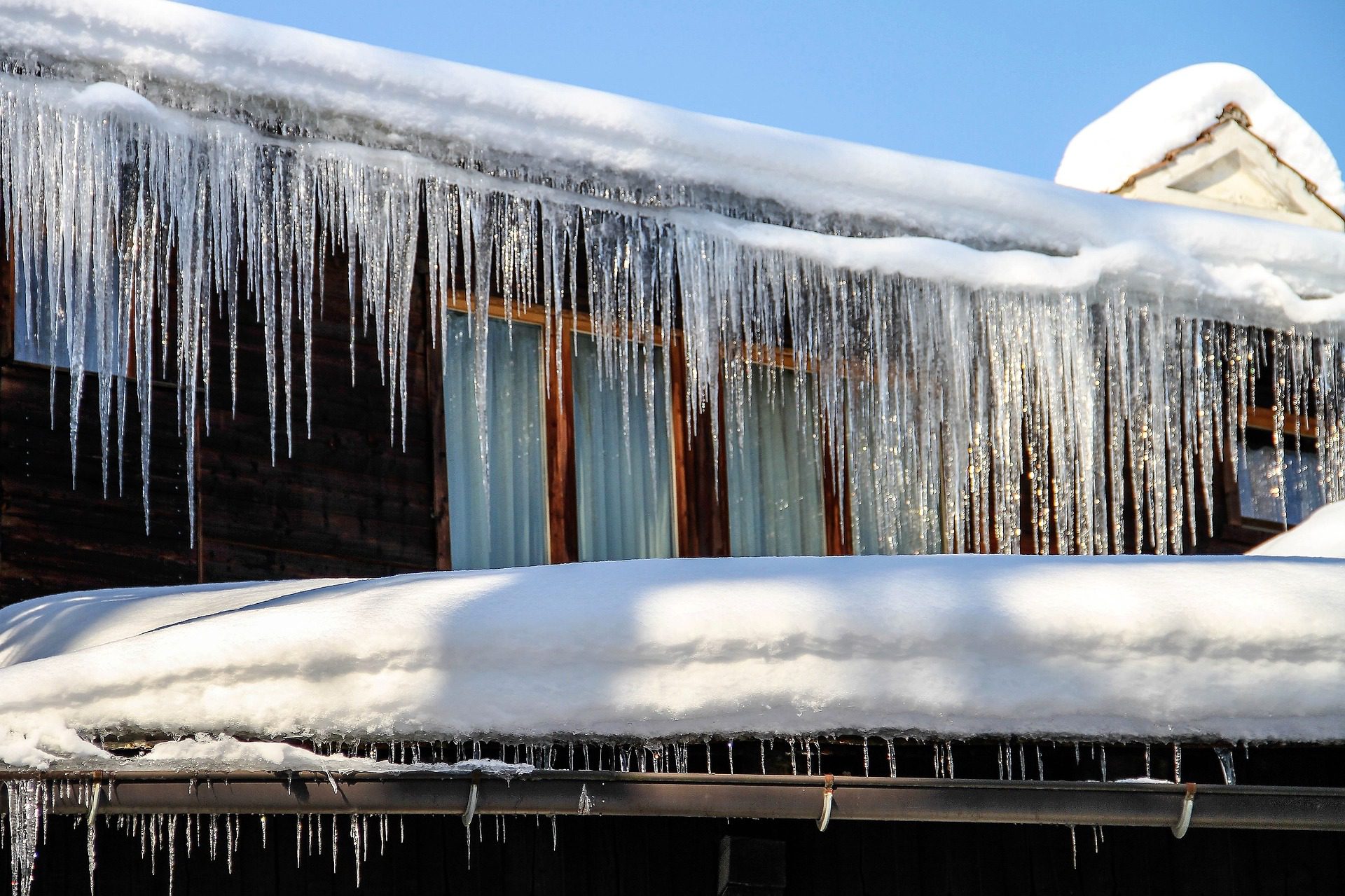
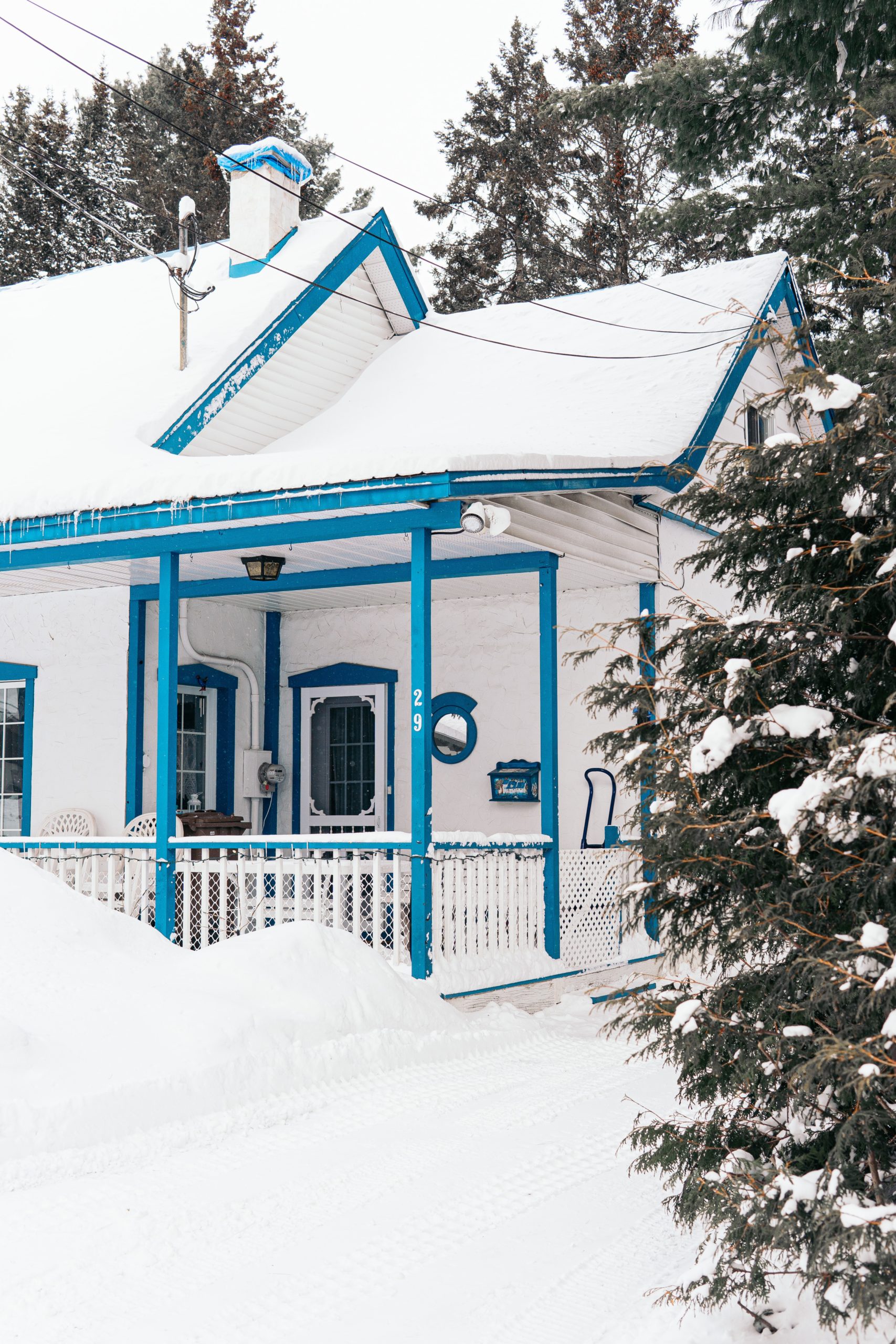
Methods of Snow Removal for Your Roof
Removing excess snow from your roof can be tricky, but it’s often necessary throughout the winter to keep your roof in good condition. Below, we’ll go over a few strategies that can help you safely and effectively clear off your roof after a heavy snowfall but remember safety and patience are key!
Always consult a professional before you climb onto your roof, especially when the surface is slick and icy due to winter conditions. Make sure you’re using the right tools and methods for the job, or else you could damage your roof while trying to clear it off. Plan ahead and work with a friend or family member that can watch your back and keep you safe while you work.
Note: Safety Always Comes First!
Pitched roofs, slippery ice, and clunky snow boots can be a recipe for disaster. Many of the snow removal methods we’re about to cover use tools designed to do their work from the ground or a ladder, so you don’t have to climb all over your roof to get the job done!
You might be tempted to step up onto your roof to get that last little pile up there but stick to common sense and play it safe – especially if you have an older roof!
Snow-covered roofs can hide all kinds of icy spots, weakened areas, and other safety hazards. Stay off your roof if possible, avoid using pointed or sharp tools so you don’t accidentally damage your roof, and call a professional at any time if you feel unconfident or unsafe.
Rope Method
The rope method is a tried-and-true tactic to clear snow from your roof, but it has a few catches: you need two people to make it work, it isn’t very effective for tall homes, and you don’t have a lot of control over where the excess snow ends up once it’s on the ground.
To clear your roof with the rope method, tie something relatively heavy to the end of a long length of rope. Standing on one side of your home, toss the weighted end over the roof and onto the ground on the other side. This buries the rope deep in the snow sitting on your roof. Have your partner grab the weight and walk back towards you with it. Working together, pull the rope towards yourselves in a sawing, back-and-forth movement. This will dislodge most of the snow on your roof and send it crashing to the ground. Make sure you’re standing well clear!
The rope method works well for clearing large swathes of snow, but it isn’t suited for tall homes or areas where you need precise control over where the snow lands.
Wire Method
The wire method works similarly to the rope method, but it doesn’t necessarily require two people or the risk of tossing a heavy weight over your home. Wire is stiffer than rope, which allows you to be more precise in where and how much snow you remove. Take a long length of wire and hold both ends in your hand. Then, toss the middle section of the wire onto your roof, either from the ground or on a ladder. Now all you have to do is walk backward while pulling on the two ends of the wire in your hands. As you pull the wire down and towards you, it slices through a layer of snow and drags it to the edge of your roof, pulling it down in front of where you’re standing.
Using a Snow Rake
Snow rakes are specially designed for this job, and you’d be hard-pressed to find a safer, easier, and more effective method. Roof rakes can be used from the ground with their extending poles or from a ladder to reach some tricky spots, and they make clearing packed snow from your roof a breeze.
They’re safe to use for most roofing materials and give you ultimate control over where the snow ends up. It might be a little more of a struggle to scrape loose hard-packed snow, but if you clear off your roof regularly, that won’t be an issue.
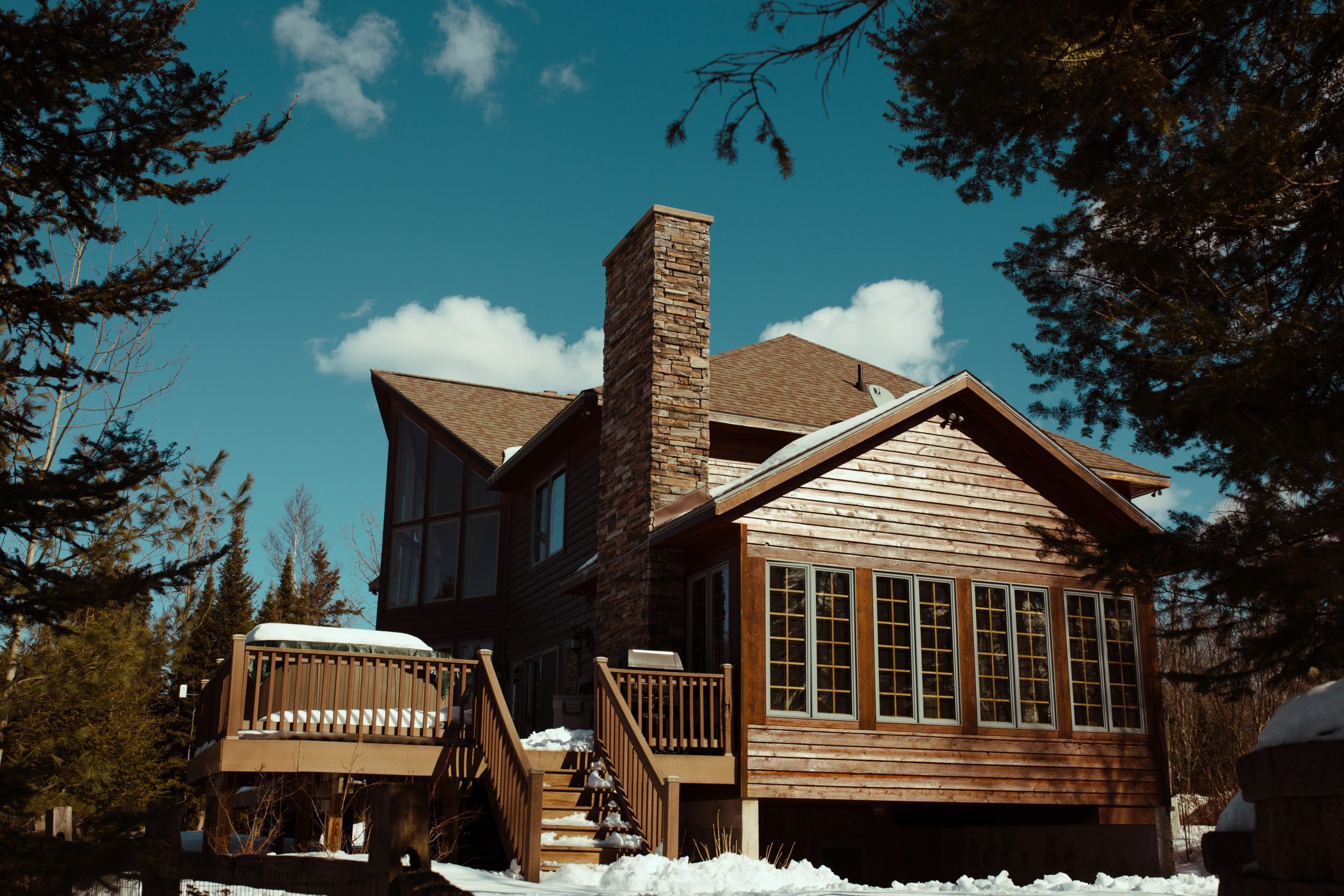
Things to Avoid When Removing Snow from Your Roof
With all of these methods, there are a few things to watch out for to make sure you, your family, and your home stay safe and secure. Clearing roof snow can be challenging, especially if you’re new to the task, so take the time to plan ahead and ensure you know what you’re doing before you start.
Not Observing Where You Drop the Snow
Always have a plan for when and where your excess snow will fall off of your roof while you’re clearing it. Know what’s below you at all times, and don’t drop snow near or over areas with equipment like outdoor air conditioner units, back entrances, gutter spouts, or delicate landscaping. Also, keep in mind that when that snow melts, it will create a large amount of running water, so don’t pile up a bunch of snow in low spots or against your home’s walls where the water could seep in during the spring thaw.
Doing the Job Alone
Clearing snow from your roof can be risky, so it’s always a good idea to have an extra set of hands, eyes, and ears to help with the process. Even if you’re not planning to climb all over your roof, it can be helpful to have someone making sure that your clearing methods aren’t damaging the roof covering or the roof itself while you work. They can also keep your ladder steady, help you wrangle your equipment, and, in the case of an emergency, they can get help if you’re unable to. We strongly recommend clearing snow from your roof with a partner.
Using Salt on Your Roof
The logic checks out: you salt your driveways and sidewalks to keep ice from building up, so why not do it on your roof as well? Unfortunately, salting your roof ends up doing more harm than good. Salt can cause damage to your roofing material – especially asphalt shingles – which can weaken them and allow moisture to drain into your home. As long as you keep the worst of the excess weight off of your roof during the winter, a little ice won’t hurt, so the drawbacks far outweigh any potential benefit that could come from salting your roof.
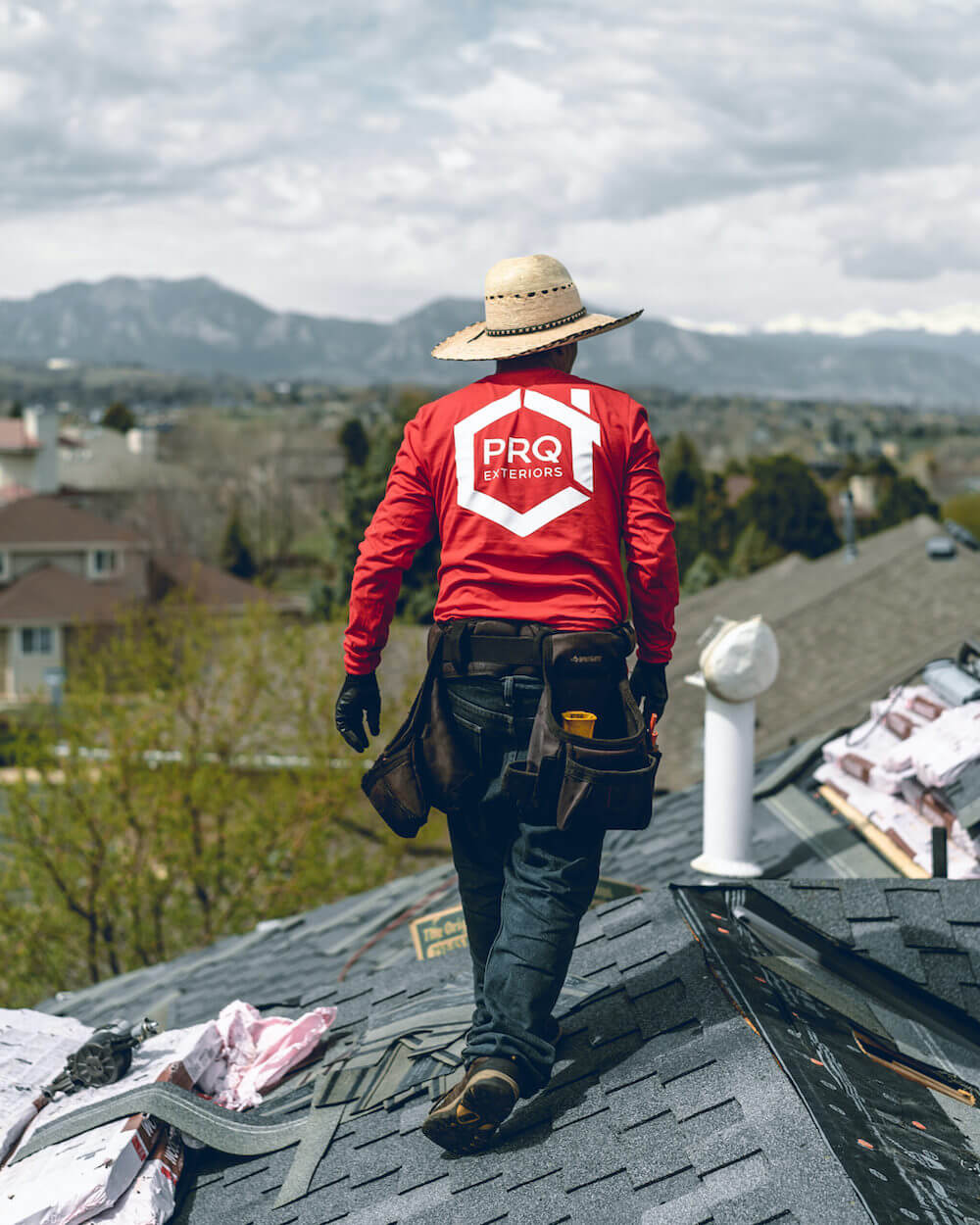

For more information about winter roof care or to learn more about our industry-leading roof repair, maintenance, installation, and replacement services, contact the pros at PRQ Exteriors today for a free consultation.
Denver, CO
Call or Text: (720)-696-9473
Call or Text: (303) 214-0703
13301 W. 43rd Drive Unit 4, Golden, CO 80403
Kansas City
Call or Text: (816) 375-6014
© Copyright 2023 PRQ Exteriors. All rights reserved. Privacy Policy & Terms of Service


